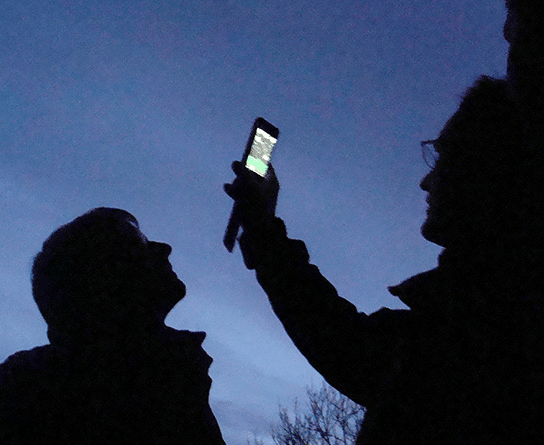

The Sky at Night
26th January 2012

I’ve been scanning the skies for any sign of aurora borealis, which was predicted to make a rare appearence above the UK this week. I’ve seen some amazing recent pictures taken up in Scotland. However a good helping of cloud and the ambient light pollution in our part Yorkshire are making sure the only northern light we can see is the orange glow of Bradford street lighting. This wasn’t the case when I was down in Herefordshire at the weekend. England’s least populated county has virtually no light pollution making stargazing on a clear night child’s play.
Cycling back from the pub at night, it was easy to make out the well-known constellations; the Plough, Orion the Hunter with his famous belt. (Though stargazing is perhaps not very wise when you are trying to steer a bicycle after a pint or two). I’m not very good at trying to piece together other stars though, but an app on my friend’s phone meant we could easily identify the planets Jupiter and Venus and other constellations such as Ursa Minor, Casseopeia and Perseus. We could even use the augmented reality to see where the sun was now it had dropped below the horizon and what stars the southern hemisphere could see.
Winter is a great time to stargaze with children; the early evenings mean the stars are out well before bedtime. It’s a calming, fascinating and wonderful thing to do, to lay back and contemplate the heavens above. Whether it inspires thoughts about science, fantasy or sprirituality, looking at the night sky reminds us how small we are and how big the universe is. You don’t need a fancy phone app or telescope, just a wide view of the night sky (try the park or school playing field), a warm blanket and a dry, clear night in an area with as little light pollution as possible. And if your kids ask you ‘why are we here?’ I hope the enquiry is more of a philosphical, than practical nature!

